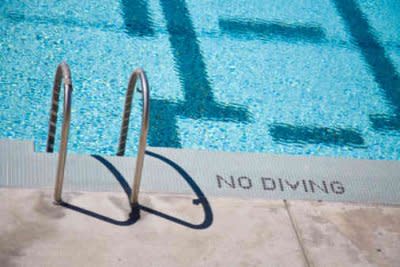Drowning looks different than you think

This article adapted by permission from modernmom.com
Think drowning involves screaming, gasping, and flailing? Think it's easy to notice someone drowning? Well, you're wrong. Drowning is a silent killer. There's no waving or calling for help of any kind. It's not like what you see on TV. Many people would not even notice another person drowning at just 30 yards away. Read on for tips on how to keep yourself and those you love safe from this silent killer whether at the beach or in your backyard pool.
See also The First Step to Better Parenting...
The Facts About this Silent Killer
The Instinctive Drowning Response, a term coined by Francesco A. Pia, Ph.D., is what people instinctively do to avoid suffocation when drowning. The responses to drowning are undramatic and surprisingly quiet. Drownings are the leading cause of injury death for young children ages 1 to 4. Even scarier is that in a small but significant percentage of kids' drownings, an adult will have watched the whole process, not having a clue what was happening (Source:CDC).
See also Do You Have a Picky Eater?
Drowning Doesn't Look Like What You'd Expect
Dr. Pia, in an article entitled "It Doesn't Look Like They're Drowning" featured in the Coast Guard's On Scene Magazine (Fall 06), describes the typical drowning response as follows: "Except in rare circumstances, drowning people are physiologically unable to call out for help. The respiratory system was designed for breathing. Speech is the secondary or overlaid function. Breathing must be fulfilled before speech occurs. Drowning people's mouths alternately sink below and reappear above the surface of the water. The mouth of a drowning person is not above the surface of the water long enough to exhale, inhale, and call out for help. When the drowning person's mouth is above the surface, she exhales and inhales quickly as her mouth starts to sink below the surface of the water. Drowning people cannot wave for help. Nature instinctively forces them to extend their arms laterally and press down on the water's surface. Pressing down on the surface of the water permits drowning people to leverage their bodies so they can lift their mouths out of the water to breathe. Throughout the Instinctive Drowning Response drowning people cannot voluntarily control their arm movements. Physiologically, drowning people who are struggling on the surface of the water cannot stop drowning and perform voluntary movements such as waving for help, moving toward a rescuer, or reaching out for a piece of rescue equipment. From beginning to end of the Instinctive Drowning Response people's bodies remain upright in the water, with no evidence of a supporting kick. Unless rescued by a trained lifeguard, these drowning people can only struggle on the surface of the water from 20 to 60 seconds before submersion occurs."
See also Top Things to Do with Your Kids This Summer
Signs of Drowning
Watch for these signs the next time you're swimming with your kids or others:
Head low in the water, mouth at water level
Head tilted back with open mouth
Hair over forehead or eyes
Eyes glassy, empty and unable to focus
Eyes closed
Hyperventilating or gasping
Not using legs
Body is vertical and upright
Trying to swim in a certain direction but not making progress
Trying to roll over on the back
Stay Aware to Save a Life
Keep your eyes open for any oddities because even when things seem ok, they may not be. A good way to be sure is to ask your kid or the person you're swimming with if he or she is all right. If they are rather still, do not answer or have a blank stare, then you may have less than 30 seconds to get to them! As any parent knows, kids make noise in the water. If they are not making noise, find out why and get them out of the water ASAP.
Mario Vittone is an expert on water safety and a marine safety specialist with the U.S. Coast Guard. For more information on water safety issues, check out www.facebook.com/watersafety.
Disclaimer: The views and opinions expressed by the author are not necessarily those of the Department of homeland Security or the U.S. Coast Guard.
Article Published by Modernmom.com
